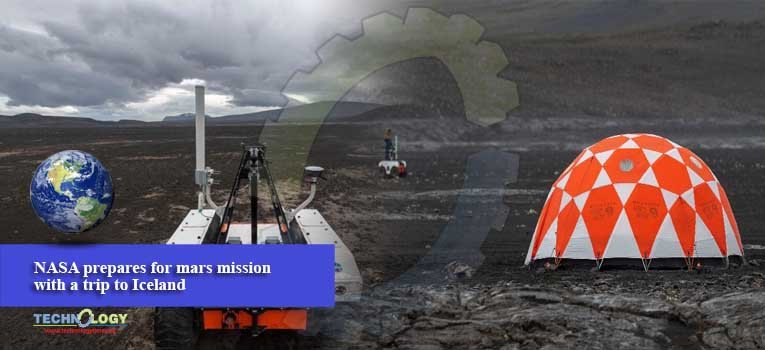To prepare for the next mission to Mars in 2020, NASA has taken to the lava fields of Iceland to get its new robotic space explorer ready for the job.
 With its black basalt sand, wind-swept dunes and craggy peaks, the Lambahraun lava field at the foot of Iceland’s second biggest glacier, Langjokull, was chosen as a stand-in for the Red Planet’s surface.
With its black basalt sand, wind-swept dunes and craggy peaks, the Lambahraun lava field at the foot of Iceland’s second biggest glacier, Langjokull, was chosen as a stand-in for the Red Planet’s surface.
It will aim to continue the work of the “Curiosity” rover, which has been exploring Mars since 2012 in search of signs of ancient life and making preparations for human exploration.
Experts say that Iceland, a volcanic island in the middle of the North Atlantic, is in many ways reminiscent of the fourth planet from the Sun.
The company has been commissioned by NASA to test a rover prototype as part of the SAND-E (Semi-Autonomous Navigation for Detrital Environments) project.
The prototype is a small, electric vehicle with white panels and an orange chassis. It has a four-wheel drive propelled by two motors and is powered by 12 small car batteries stacked inside basically indestructible.
The speed needs to be slow to enable the rover to collect data and imagery properly, Mark Vandermeulen, a robotics engineer at Mission Control Space Services, said.
Utilizing its sensors and camera, the rover gathers and classifies data from its environment and sends back the findings to the engineers’ trailer.
The engineers then package the data and forward it to a tent where the scientists are huddled, to simulate how the data would be sent from Mars to Earth. The rover exploring Iceland is just a prototype for the one that will be going to Mars next year.
The setting allows NASA to test equipment and procedures, as well as the people performing them, in extreme environments while remaining on terra firma.